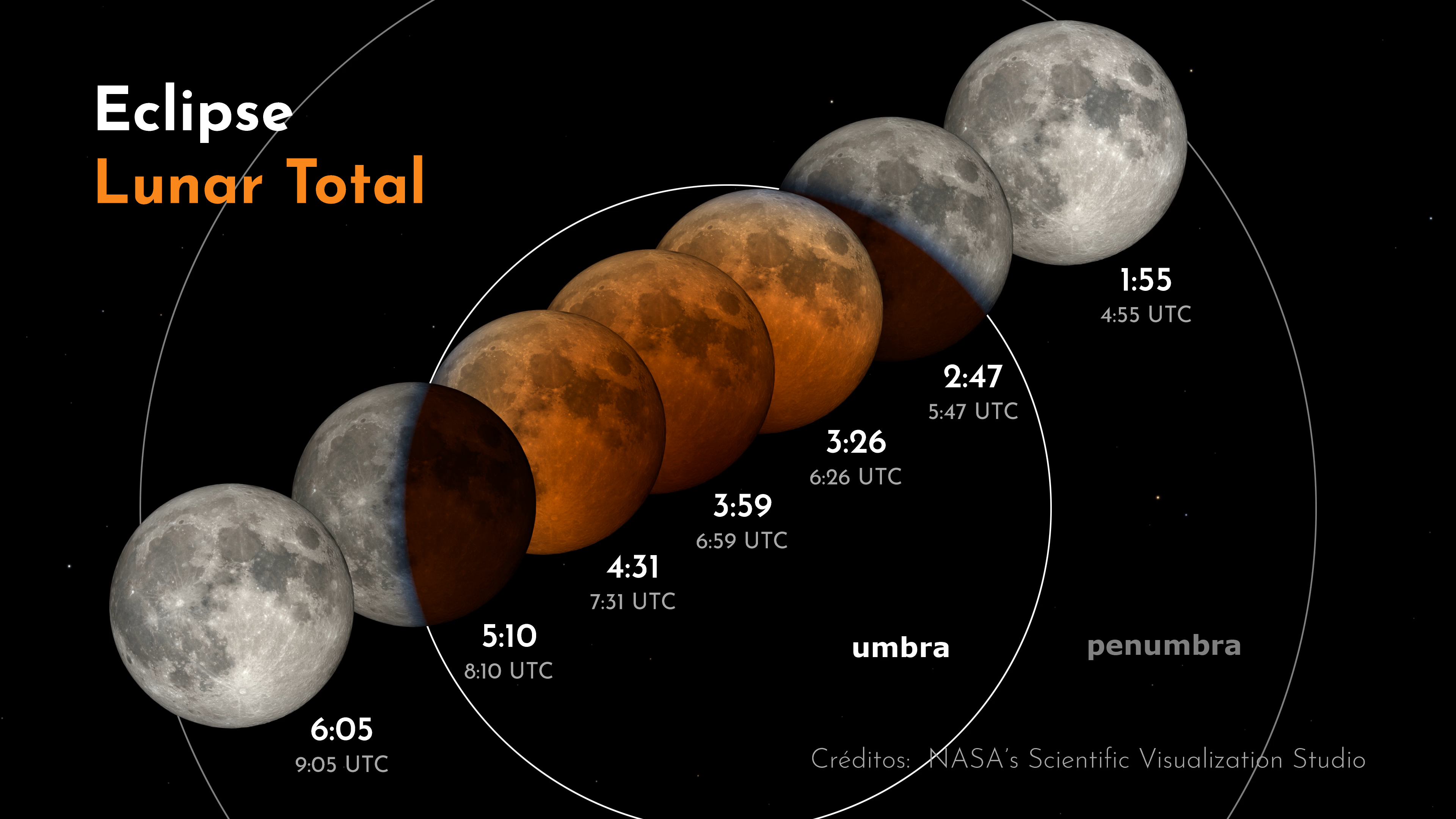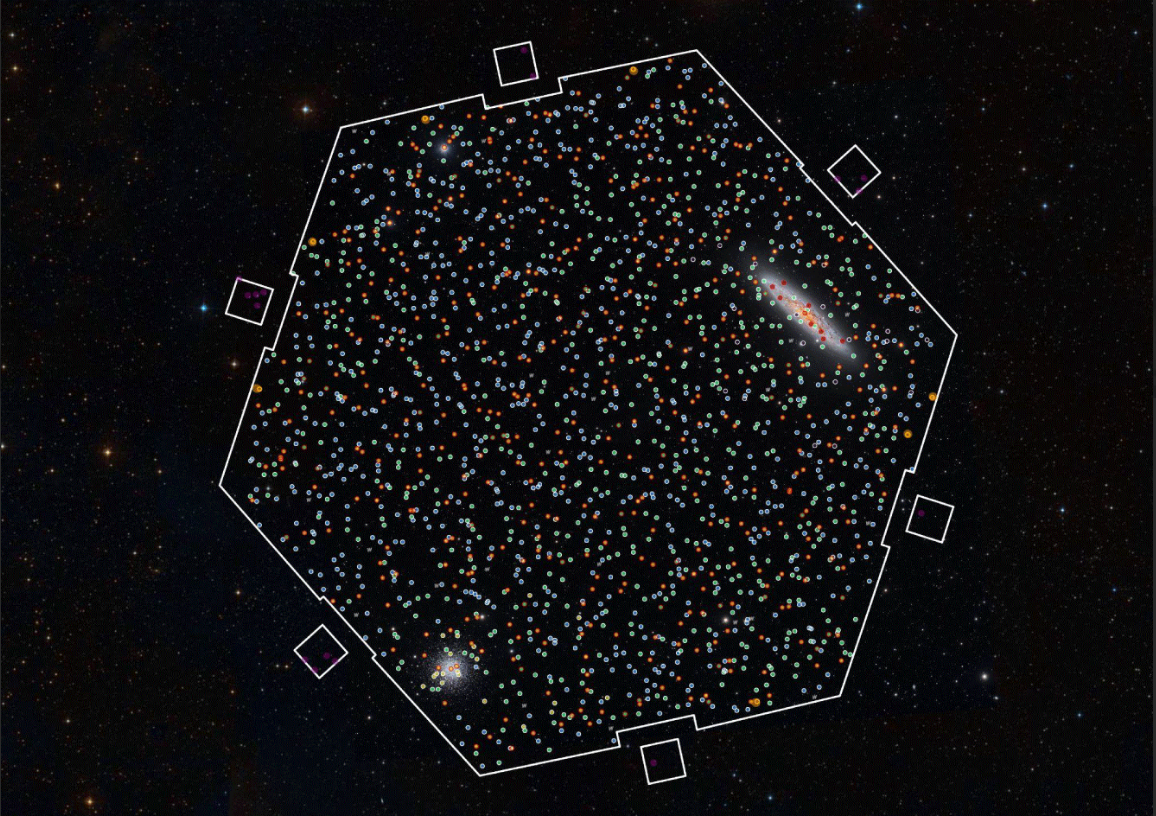
What awaits us during the Lunar Eclipse on March 14? Times, characteristics, relevance of the moon and next eclipse
This week, Chile will witness a new total lunar eclipse, which will stand out because our natural satellite will include a reddish hue during its development, bringing us once again a “Blood Moon”. The time of this phenomenon will occur between 3:26 and 4:31 in the morning.
This March 14, the sky will have an astronomical phenomenon to follow: a total lunar eclipse. The event, which will not require telescopes or binoculars to be observed, will be visible throughout the continental and insular territory of Chile. The moon will begin to pass through the Earth’s shadow around 1:00 a.m., and the climax will occur between 3:26 and 4:31 a.m., when the Moon will be completely darkened, including a characteristic reddish color.
The astronomer and outreach manager of the Center for Astrophysics and Related Technologies (CATA), José Utreras, explains the reason for this phenomenon: “From the Moon, the Earth’s sky is still visible during the eclipse, and it will have the typical red color of sunset. It is this same light that tints the Moon red”.
Importance of the moon and its effect on the Earth
Lunar eclipses do not significantly affect the Earth, but they influence the oceans by the alignment of the Moon and the Sun, raising the sea level, as occurs at full or new moon.
At the same time, from the scientific point of view, the eclipse allows to study some properties of the natural satellite. The astronomer explains that the lunar surface undergoes a rapid cooling and during the eclipse, the moon’s soil stops receiving direct sunlight and its temperature, which can reach over 100°C, drops drastically, which allows us to learn more about the composition of the lunar soil.
Another interesting aspect is the usefulness of these events for research in other areas of astronomy, such as the study of exoplanets. “During the eclipse, light from the Sun passes through the Earth’s atmosphere before reflecting off the Moon and returning to Earth. If we can deduce the composition of our atmosphere from that light, then we can apply the same methods to study the atmospheric composition of distant planets,” explains Utreras.
On the other hand, the study of the Moon has been relevant to understand the antiquity of the solar system and the formation of the Earth. In addition, space missions to the natural satellite have accelerated the development of technological breakthroughs such as freeze-dried food, cooling suits, water purification systems and fire-resistant fabrics. In addition to the space race that significantly boosted the development of computer chips.
In summary, the March 14 eclipse will be a unique opportunity to admire a new astronomical phenomenon from the skies of Chile and to learn more about the importance of the moon, following the subsequent studies that may be carried out post-event. For those who wish to observe, it is recommended to be in a completely dark environment, and it will be enough to look at the sky in the early morning and enjoy the show without the need for special instruments.
After this phenomenon, when will the next total lunar eclipse occur? We will have to wait more than four years to witness this phenomenon again, which will be precisely at midnight on June 25 and 26, 2029, which will also be visible throughout our country.
Recent news
-
 Publicado el: 15/11/2025Leonids meteor shower 2025: What are they, when will they be visible from Chile, and what can we learn from them?
Publicado el: 15/11/2025Leonids meteor shower 2025: What are they, when will they be visible from Chile, and what can we learn from them? -
 Publicado el: 13/11/2025CATA researcher strengthens international ties during visit to the Center for Astrobiology in Madrid
Publicado el: 13/11/2025CATA researcher strengthens international ties during visit to the Center for Astrobiology in Madrid -
 Publicado el: 12/11/2025Fourth graders learned what would happen if the Moon did not exist
Publicado el: 12/11/2025Fourth graders learned what would happen if the Moon did not exist -
 Publicado el: 29/10/2025Chile celebrates the first light of 4MOST: two major projects involving CATA astronomers begin to explore the Universe
Publicado el: 29/10/2025Chile celebrates the first light of 4MOST: two major projects involving CATA astronomers begin to explore the Universe -
 Publicado el: 24/10/2025CATA researcher participated in Max Planck regional meeting in Brazil
Publicado el: 24/10/2025CATA researcher participated in Max Planck regional meeting in Brazil
Categories list
- Acknowledgments 21
- Astrobiology 6
- AstroCluster 1
- Black holes 18
- Corporativo 57
- Cosmology 5
- Descubrimientos 22
- Disclosure 71
- Exoplanets 13
- Extension 4
- Galaxies 21
- Galaxies formation 5
- Inter y Transdisciplina 4
- Local Universe 16
- Publications 6
- Sin categorizar 34
- Solar System 21
- Stellar formation 8
- Technology 14
- Technology Transfer 16